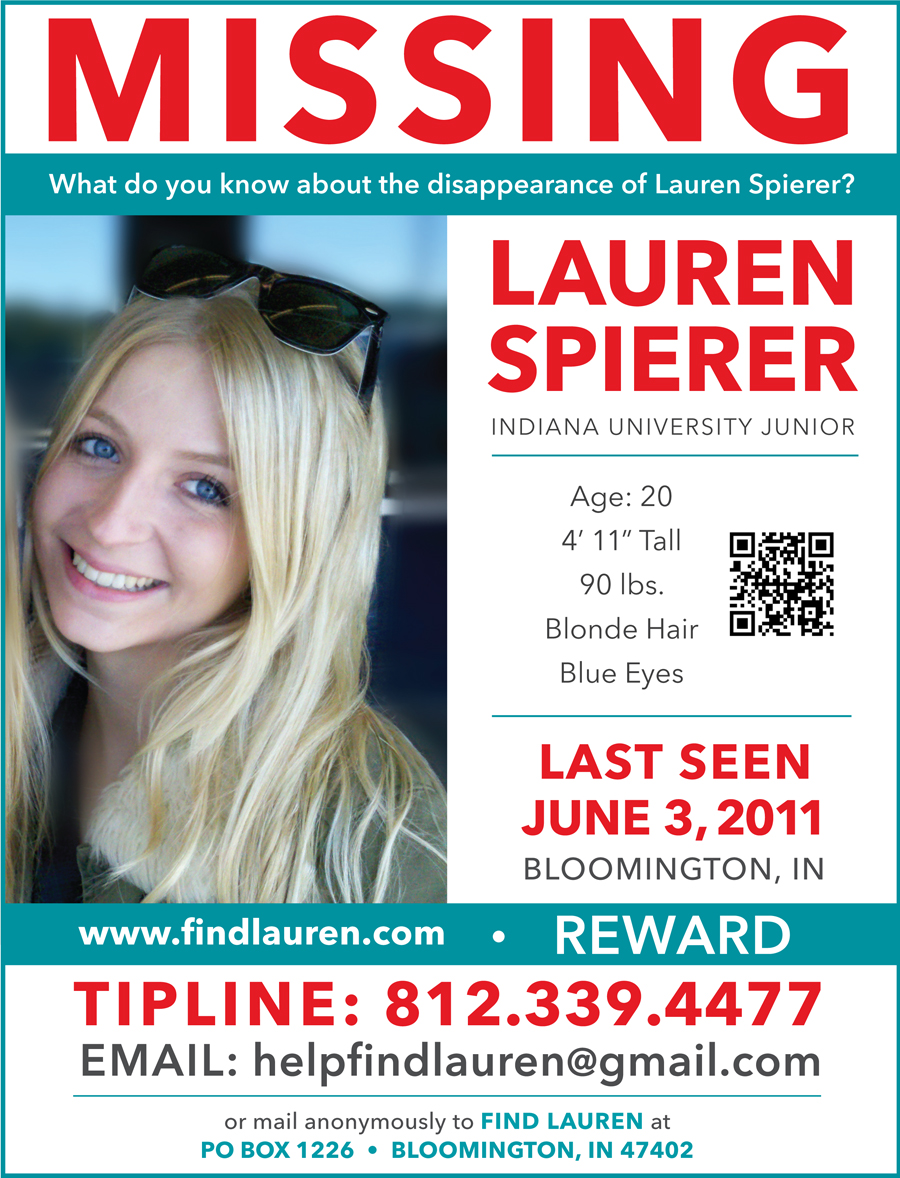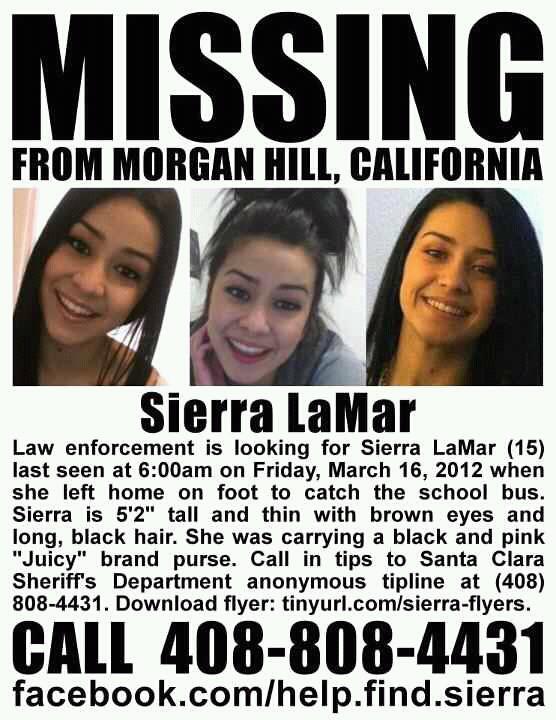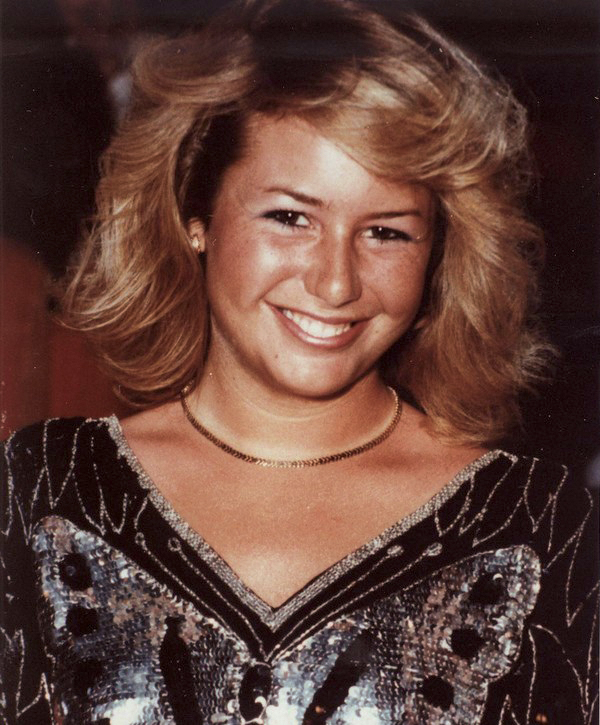Emo Screamo Helter Skelter
 Saturday, January 28, 2012 at 5:59PM
Saturday, January 28, 2012 at 5:59PM 
“Today is my 18th birthday. I’ve sat in jail for over two years now. On October 21, 2009, I fulfilled my deepest desire to watch someone die by my own hands. I wanted to know what it would feel like to kill. It was fun! First, I slit the 9-year-old’s throat. Then, I strangled and stabbed her in the chest. Yes, yes, I watched her die with utter fascination. There’s nothing in the world like it and I found out there’s no higher rush than watching vibrant eyes slowly dim. The gasping and gurgling sounds in her throat were real turn-ons.
“Some people called me an emo. I don’t care; call me what you want, it doesn’t matter. I am a cold-blooded murderer. I was only 15 when I slaughtered Elizabeth Olten. My name is Alyssa Bustamante.”*

Three weeks ago, on January 10, Bustamante stood before Cole County Circuit Court Judge Patricia Joyce in a Jefferson City, Missouri courtroom and pleaded guilty to second-degree murder and armed criminal action. She was originally charged with first-degree murder. Her trial was set to start on Monday, January 30.
Judge Joyce asked her if she understood she was giving up her right to a trial. She said yes. Staring straight into the judge’s eyes, she admitted everything, “I strangled her and stabbed her in the chest.”
“Did you cut her throat, too?” the judge inquired.
“Yes,” Bustamante responded.
The reduced murder charge is due to her plea in lieu of a trial, which will save taxpayers a small fortune. On the plus side, the plea does not include any agreement on a reduced sentence. In other words, no deal was made, so she faces 10 years to life in prison for the murder charge, and no less than 3 years for the armed criminal action charge, defined by Missouri law as:
571.015. 1. Except as provided in subsection 4 of this section, any person who commits any felony under the laws of this state by, with, or through the use, assistance, or aid of a dangerous instrument or deadly weapon is also guilty of the crime of armed criminal action and, upon conviction, shall be punished by imprisonment by the department of corrections and human resources for a term of not less than three years. The punishment imposed pursuant to this subsection shall be in addition to any punishment provided by law for the crime committed by, with, or through the use, assistance, or aid of a dangerous instrument or deadly weapon. No person convicted under this subsection shall be eligible for parole, probation, conditional release or suspended imposition or execution of sentence for a period of three calendar years.
 What prompted a young girl to commit such a crime? Was it something inherent in her DNA? Was she destined to be a murderer or was she merely conditioned by outside influences; a product of her own culture and upbringing?
What prompted a young girl to commit such a crime? Was it something inherent in her DNA? Was she destined to be a murderer or was she merely conditioned by outside influences; a product of her own culture and upbringing?
No doubt, Alyssa Bustamante could readily be classified as an emo, but what are emos, and where did the term come from? Clearly, I am not a stereotypical stereotyper. I believe that we are mostly responsible for our own actions, with few exceptions. Certainly, if provoked by a serious threat to our well-being, a defensive reaction would be necessary, and that could include killing a perpetrator. In the case of Elizabeth Olten, Bustamante schemed to kill this child. Whether Olten was the intended victim all along, I don’t know, but they lived very close to each other in St. Martins, a small town just west of Jefferson City.
What, exactly, is an emo?
I guess it’s rather difficult to describe exactly what an emo is because no two people are alike. I am a product of the 60s, and there’s no single definition for a hippie. Some were peace-loving draft dodgers. Others were pot smokers. Some dropped acid and some just dropped out of the mainstream thinking of the masses at the time. You know, a counter-culture philosophy of eschewing the establishment. Peace. Right on. Out of sight, man.
 I imagine we could look at Charles Manson as a prime example of a message gone awry. The Beatles song “Helter Skelter” had nothing to do with racism in America, serial killings or hatred of all things pig; as in da fuzz. Cops. Dirty coppers. Paul McCartney wrote the tune as a response to The Who’s Pete Townsend, who wrote the single, “I Can See For Miles.” “Helter Skelter” was inspired by a spiralling amusement park ride and it was intended to prove McCartney’s critics wrong for accusing him of only writing ballads.
I imagine we could look at Charles Manson as a prime example of a message gone awry. The Beatles song “Helter Skelter” had nothing to do with racism in America, serial killings or hatred of all things pig; as in da fuzz. Cops. Dirty coppers. Paul McCartney wrote the tune as a response to The Who’s Pete Townsend, who wrote the single, “I Can See For Miles.” “Helter Skelter” was inspired by a spiralling amusement park ride and it was intended to prove McCartney’s critics wrong for accusing him of only writing ballads.
Unfortunately, Charles Manson interpreted it as a perfect opportunity to wage a war between blacks and whites, in which racism was more pronounced then. Power to the People and all. By killing wealthy whites, society would blame blacks, as they were called back then, and retaliate. Racist upheaval! What a concept.
What’s strange was that Manson literally had power over his people, called his “Family” members. Sex was rampant. Through drug-induced orgies, he brainwashed his Family into committing horrible crimes; murdering and slashing a quite pregnant actress, Sharon Tate. That’s just for starters, of course, because more people were slaughtered, but my point is merely that some people are more influenced than others. Despite my involvement in the culture at the time, I was more of a follower of John Lennon, who sang about giving peace a chance. That and my religious upbringing.
Emos are in another world, cleaved from the counter-culture of Punk and Indie rock music. While the term emo can be traced to the mid-80s through music, it didn’t come into its own until after 9/11. According to Andy Greenwald, author of Nothing Feels Good: Punk Rock, Teenagers, and Emo:
“The media business, so desperate for its self-obsessed, post-9/11 predictions of a return to austerity and the death of irony to come true, had found its next big thing. But it was barely a ‘thing,’ because no one had heard of it, and those who had couldn’t define it. Despite the fact that the hedonistic, materialistic hip-hop of Nelly was still dominating the charts, magazine readers in the summer of ‘02 were informed that the nation was deep in an introverted healing process, and the way it was healing was by wearing thick black glasses and vintage striped shirts. Emo, we were told, would heal us all through fashion.”
Today, emos are generally considered to be emotional, sensitive, shy, introverted and/or angst-ridden; angst meaning a feeling of insecurity, anxiety and apprehension. They can be nervous wrecks on the inside. Sometimes, they harm themselves by cutting their arms and wrists, and occasionally, they take it beyond that by deciding suicide is the way out. Bustamante cut herself, but she took a different path by killing someone else.
 Hannah Bond was a wrist-cutting emo living in Kent, UK. In September of 2007, she hanged herself in her family home. On the evening she died, she had argued with her mother over spending the night at a friend’s house. Losing the argument, she said, “I feel like killing myself.” An hour later, she did just that.
Hannah Bond was a wrist-cutting emo living in Kent, UK. In September of 2007, she hanged herself in her family home. On the evening she died, she had argued with her mother over spending the night at a friend’s house. Losing the argument, she said, “I feel like killing myself.” An hour later, she did just that.
Both her mother, Heather Bond, and the coroner blamed emo music for her death at the official inquest. It seems that some emo music glamorizes suicide. Apparently, she had been part of an Internet “emo” cult and her Bebo page contained an image of an emo girl with bloody wrists. At the inquest, it was also learned that Hannah discussed, online, the glamorous part of hanging herself after showing her father her cut wrists, a ritual, which was part of her emo initiation. (See: Emo Girl — Hannah Bond)
Heather told the inquest that she had studied the emo phenomenon since Hannah’s untimely death. “There are websites that show pink teddies hanging themselves,” she stated. “She [Hannah] called emo a fashion and I thought it was normal.”
Little did she know.
 We may never know why Alyssa Bustamante chose to murder Elizabeth Olten instead of taking her own life, which she attempted to do in 2007. During the sentencing hearing, set for February 6-7, Cole County prosecutor Mark Richardson and public defenders Donald Catlett and Charles Moreland will present evidence for Judge Joyce to consider before rendering a final decision. Will Bustamante speak on her own behalf? Will she blame herself or something else? I don’t know, but until then, here’s something for you to ponder… What does this picture remind you of? Whose name do you associate it with?
We may never know why Alyssa Bustamante chose to murder Elizabeth Olten instead of taking her own life, which she attempted to do in 2007. During the sentencing hearing, set for February 6-7, Cole County prosecutor Mark Richardson and public defenders Donald Catlett and Charles Moreland will present evidence for Judge Joyce to consider before rendering a final decision. Will Bustamante speak on her own behalf? Will she blame herself or something else? I don’t know, but until then, here’s something for you to ponder… What does this picture remind you of? Whose name do you associate it with?
Murder is a strange thing. Sometimes, you get away with it. Sometimes, you don’t.
*Not a direct quote
 Dave Knechel | tagged
Dave Knechel | tagged  Andy Greenwald,
Andy Greenwald,  Charles Manson,
Charles Manson,  Charles Moreland,
Charles Moreland,  Donald Catlett,
Donald Catlett,  Hanna Bond,
Hanna Bond,  Helter Skelter,
Helter Skelter,  Hippie,
Hippie,  Jefferson City,
Jefferson City,  Mark Richardson,
Mark Richardson,  Missouri,
Missouri,  Paul McCartney,
Paul McCartney,  St. Martins | in
St. Martins | in  Alyssa Bustamante,
Alyssa Bustamante,  Casey Anthony,
Casey Anthony,  Dave Knechel,
Dave Knechel,  David B. Knechel,
David B. Knechel,  David Knechel,
David Knechel,  Elizabeth Olten,
Elizabeth Olten,  Judge Patricia Joyce,
Judge Patricia Joyce,  Marinade Dave,
Marinade Dave,  Marinade Dave Knechel,
Marinade Dave Knechel,  marinadedave | |
marinadedave | |  1 Reference
1 Reference 












 LEGAL NOTICE
©David B. Knechel. All Rights Reserved. No portion of this site can be reproduced in it's entirety or in part without expressed written permission by the owner/administrator of this site in accordance with the Digital Millennium Copyright Act. Section 512(c)(3) of the U.S. Copyright Act, 17 U.S.C. §512(c)(3). The charges against defendants are mere accusations and the subjects are presumed innocent until found guilty in a court of law.
LEGAL NOTICE
©David B. Knechel. All Rights Reserved. No portion of this site can be reproduced in it's entirety or in part without expressed written permission by the owner/administrator of this site in accordance with the Digital Millennium Copyright Act. Section 512(c)(3) of the U.S. Copyright Act, 17 U.S.C. §512(c)(3). The charges against defendants are mere accusations and the subjects are presumed innocent until found guilty in a court of law.